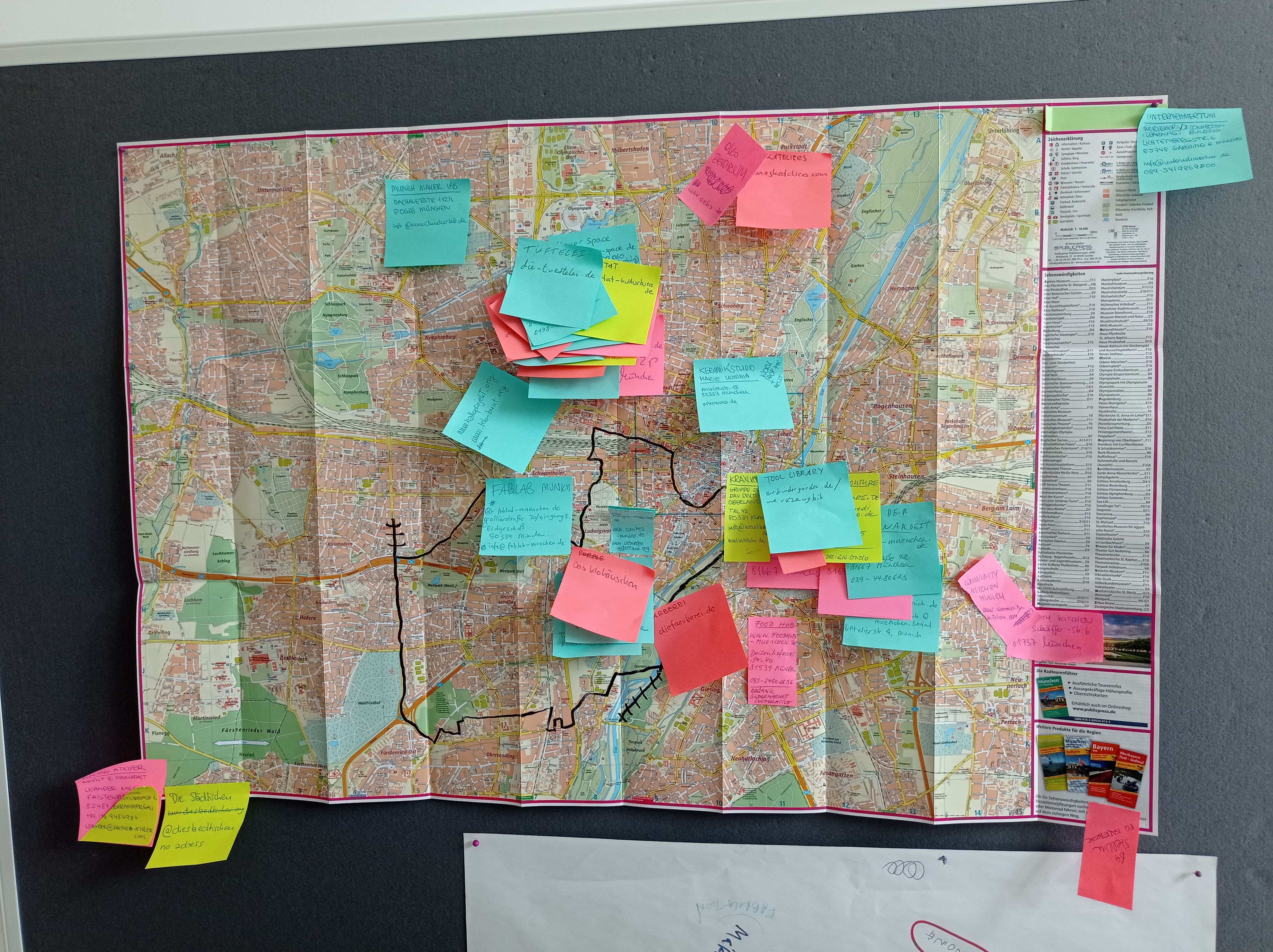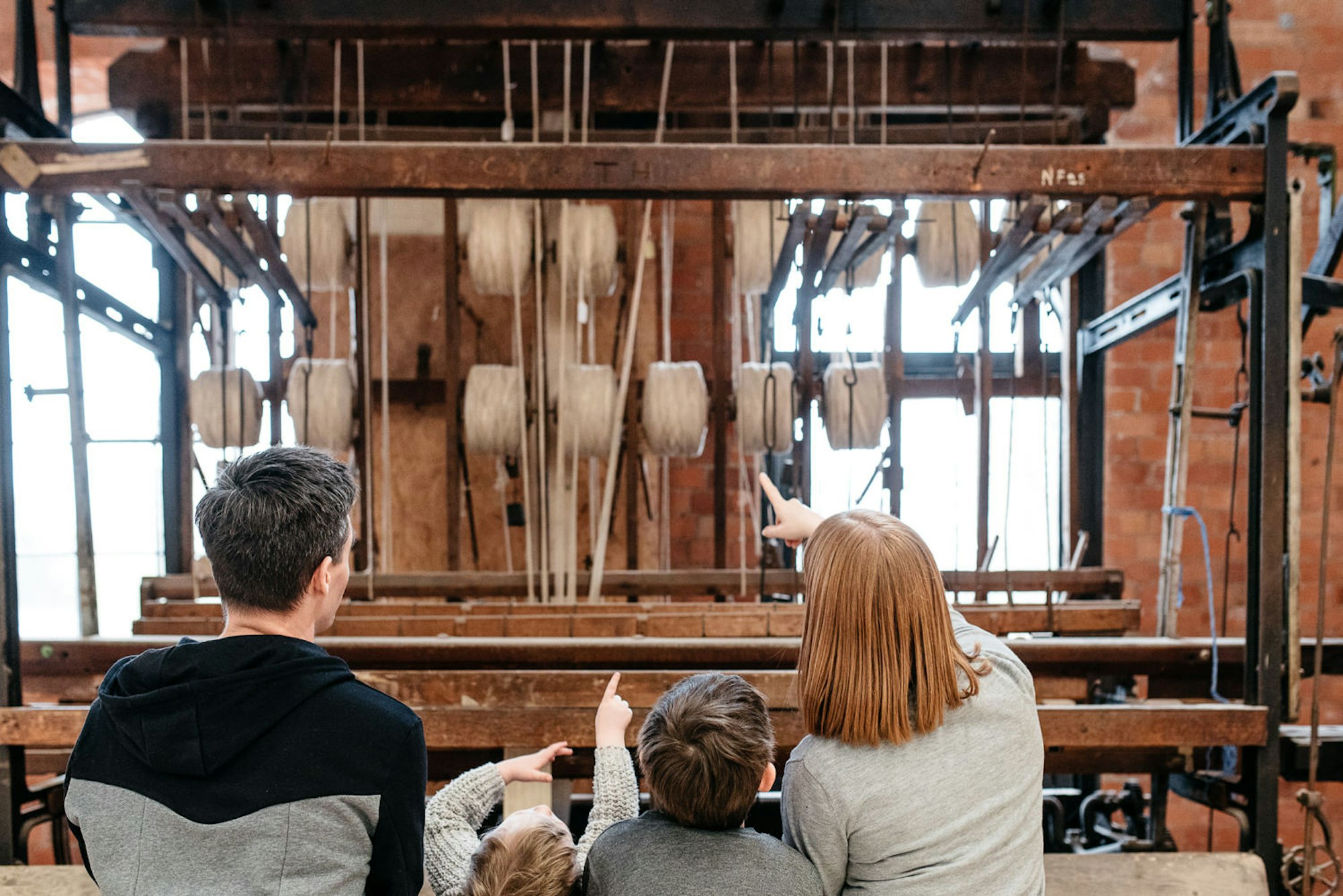Stories / Inspiration /
The Twelve Processes of Christmas

For the Make Works 12 Days of Christmas, we will be telling you a bit about different manufacturing processes each day, with suggestions about where you can access that process in Scotland.
Water Jet Cutting
Water Jet Cutting is the process of using a high pressure jet of water to mark and cut through material. Working using digital files (like a CNC Router) the water jet is capable of cutting shapes and profiles into soft materials like wood and rubber, from 1mm to 150mm thick. The addition of an abrasive material to the water also enables it to cut almost all materials; such as metals, synthetics, rubber, foam, tiles, stone, glass (except toughened glass) & wood, from sheet sizes up to 4m x 2m.
Water Jet Cutting is used widely in the aerospace, automotive and electronics industry. However, it is also used by artists, designers, and sculptors who enjoy the intricacy of the metalwork and stone work that can be achieved using this process. The advantage of water jet cutting over the more well known laser cutting, is in being able to cut through a wider variety, and thicker sheet materials. Here's an example of a piece of public art by Rob Mulholland that was Water Jet Cut.

You can find out more about Water Jet Cutting by reading our Guide to Water Jet Cutting here
Companies on Make Works who offer Water Jet Cutting are JetCut and JGB Steelcraft
Die Cutting
Die cutting is used to make multiples of the same 2-D shape to sheet material. This by applying a sharp blade, formed in the shape of the profile (the die) to a softer material. It’s basically cookie cutting on an industrial scale. By switching the sharp blade on a die for a blunt blade you can achieve a creasing effect rather than cutting directly through the material. Die-cutting is used on a whole range of materials from fabric, paper and cardboard to rubber and sheet metal. It is used to make shoes, clothes, print and packaging.
When using Die Cutting it’s likely that specific die will need to be made in order to make your piece. Manufacturers and fabricators may separate this out in costing as the ‘die cost’ and it will bary depending on the size and complexity of the shape you are cutting out. Most die-cutters are distinguished as either being Flat Bed or Rotary – Rotary Die Cutters run faster than Flat Bed Die Cutters but the die itself will be more costly to produce.


On Make Works you will find companies like Kingscroft Logistics and Boxshop offering die-cutting for packaging. For print, die cutting is offered by companies such as Glasgow Press and The Hunter Press, as well as William Johnston who will die cut materials like rubber and cork.
Piece Dyeing
Piece Dyeing is the most common type of fabric dyeing and it’s used across all types of fabrics used in fashion and interiors. It is the process of passing a length of fabric through a bath of dye. This is most commonly done using a machine called Beck and Jig - whereby the fabric is twisted into a rope and is automatically dipped and re-dipped into the dye-bath until the finish is uniform. The Beck and Jig machine can die up to 900KG of fabric (usually woven fabric) at a time.

Other types of piece dyeing include:
Jig Dyeing – the fabric is held on rollers at full width rather than in rope form
Jet Dyeing – the fabric is held in a tube and pressurised jets of dye are pushed through the tube.

You can find Schofield Textile Dyers and Finishers on Make Works who offer piece dyeing.
Plastic Extrusion Moulding
Plastic extrusion moulding is the process of heating plastic granuales and forcing them through a die to produces a long profile shape. It is used to manufacture objects like guttering, plastic pipes, seals and tubes. You can see the same process in play (just without the need for heat) in plasticine toys, or when making spaghetti.
Plastic Extrusion Moulding can be used for materials like polystyrene, nylon, polypropylene and polythene.
You can find companies on Make Works like Universal Fibre Optics, technical textiles manufacturers like Scott and Fyfe and the textile research labs at Heriot Watt School of Textile and Design will use Plastic Extrusion Moulding.
Letterpress Printing
This traditional printing technique originated in 1440, and was used extensively throughout the 20th Century until the advent of offset printing. Letterpress has more recently seen a huge resurgence with artists and designers looking for a high-quality relief print in their work.

As a process, Letterpress is a form of relief printing whereby the paper is pressed against an inked, raised surface. When it comes to Letterpress the number of colours that you’re including in the print is key as each colour will need to be printed separately.
Here's a film showing the letterpress at Piccolo Press.
There are three Letterpress companies in Scotland listed on Make Works - Glasgow Press, Hunter Press and Piccolo Press.
Jiggering and Jolleying
Jiggering and jolleying can be seen as extensions of the potter's wheel. The process is used to help automate the process of forming flatware, like plates and lids (jiggering) or hollow vessels like plantpots or bowls (jollying). A pivoting arm called either a jigger or jolley (depending on its use) with a set profile is brought down onto the clay as it is formed. A different profile is needed for each size and shape that you’re looking to form. By using jiggering and jolleying you can far more easily achieve uniformity of size and shape across a set.
One of the last Jigger Jolley machines in Scotland is at Highland Stoneware near Ullapool. Ceramacist Katy West used it in 2013 as part of her Make Works Tour Residency.

On Make Works you can find a Jigger Jolley machine at Highland Stoneware. To access ceramics facilities in Scotland take a look at Cyan Clayworks or Glasgow Ceramics Studio.
Foil Stamping
Foil stamping, also referred to as foiling, is the application of coloured or metallic foil to paper. This is done using a heated die. As with letterpress, foil stamping requires the production of a die. People often combine foiling with an embossing.

It is important to remember in the design phase that unlike printing, foil isn’t available in every colour. It might be worth checking with your printer to see what colours are available first, and designing your piece around the colours that are available.
You can find Foil Stamping in Scotland at Glasgow Press, Hunter Press, Piccolo Press and Kingscroft Logistics
Plasma Cutting
Plasma Cutting is used to cut any electrically-conductive material including aluminium, stainless steel and brass.
Plasma Cutters work by sending an electric arc through a gas such as nitrogen, argon or oxygen. This brings the temperature of the gas high enough so that it enters the 4th state of matter which is called plasma. The piece of metal that you’re cutting forms part of the circuit so the electrical conductivity transfers from the plasma to the metal, cutting through it.
Plasma Cutting is preferable to using a torch as it causes far less warping of the metal, and is able to cut more accurately, which is why plasma cutters are often used by artists and designers. The plasma cutter can be used freehand, but many people use soapstone to trace a template to follow.

Image: Plasma cut oil drum by sculptor and welder, Cal Lane.
Many tradesmen use plasma cutters as a way to really quickly and cleanly cut through metal. There are also CNC Plasma Cutters enabling you to cut accurate patterns and shapes.
You can Plasma Cut in Scotland at workshop facilities such as Edinburgh Sculpture Workshop and Glasgow Sculpture Studios. You can have things plasma cut for you at JGB Steelcraft.
Acid Etching
Chemical etching uses corrosive chemicals to dissolve away unwanted parts of metal. It can produce textured surfaces, from simple patterns to images with fine details and high tolerances.

A ring using Acid Etching by Sally Grant
Traditional chemical etching is used by many people who work with metal including artist fabricators and jewellers. This process involves covering the parts of the metal that you would like to resist the corrosive acid with a mask. This can be anything that will resist the acid, such as beeswax, nail polish, grease pencil or even Sharpie marker.
The metal is then placed in an acid solution which eats away at the uncovered parts. Once the mask is removed and the metal is rinsed the process is complete. If done properly acid etching enables you to achieve results with a simple set up that otherwise would require sophisticated digital fabrication tools.
Photochemical etching is slightly different than traditional chemical etching in that it uses light-reactive chemicals to form the mask. Many printmakers also a similar etching process, known as intaglio, which you will find in any printmaking workshops across Scotland.
You will find acid etching equipment in Scotland at Jewellery Studios like Silverhub Studios and Vanilla Ink
Gilding
Gilding is the process of applying thin gold sheets (or other metals) to a surface. It is used across scales, from ornaments and small objects to whole ceilings and buildings. The process has been used as long ago as 2000 BC, by the Egyptians.

There are three main types of gilding; oil gilding, water gilding, and verre eglomise.
Oil Guilding is the quickest and easiest method for gilding, and can be used on any surface. It is the preferred method for any pieces that will be outside and have to deal with moisture.
Water Guilding achieves the highest quality of finish and is the by far the most labour intensive method of guilding as it requires a lot of preparation to the surface prior to applying the gold. It cannot be used for surfaces that will come into contact with moisture.
Verre Eglomise is also known as glass guilding - the gold is placed on the reverse side of the glass producing an impressive reflection. Glass Guilding is used in sign writing, art and glassware.
On Make Works you can find Lynwood Gilders who work across architecture, restoration, packaging, furniture and interiors.
Dobby Loom Weaving
The word dobby comes from “draw boy” who would have been the weaver’s helper. His work would have been controlling the weavers warp thread (the lengthwise yarn) by pulling on draw threads to weave fabric. A dobby loom is a type of floor loom that controls the warp threads using a device, instead of a huamn helper, called a dobby.
Dobby looms are one of the most common looms used in industry today, alongside their common counterpart jacquard looms. On a dobby loom, groups of warp threads move up and down together. On a Jacquard loom however, each thread can move independently allowing for greater scale and complexity of design.
You can see a Dobby Loom in action here at Peter Greig & Co, a linen mill in Kirkcaldy.
You can read more about weaving in our Guide to Weaving
In Scotland, textile manufacturing companies like Bute Fabrics, Calzeat, Peter Greig & Co, and Woven In The Bone all use Dobby Loom Weaving.
You can also have a go using a Dobby Loom yourself at public textile workshops like Heriot Watt School of Textiles and Design and Global Yell.
Categories
Inspiration
Related stories
Day 23 | Make Works Residencies 01 | Catching up with Katy West
Craft Scotland Conference
Happy International Women's Day!
Material Monday - Woven Polypropylene
Maker Speed Dater




